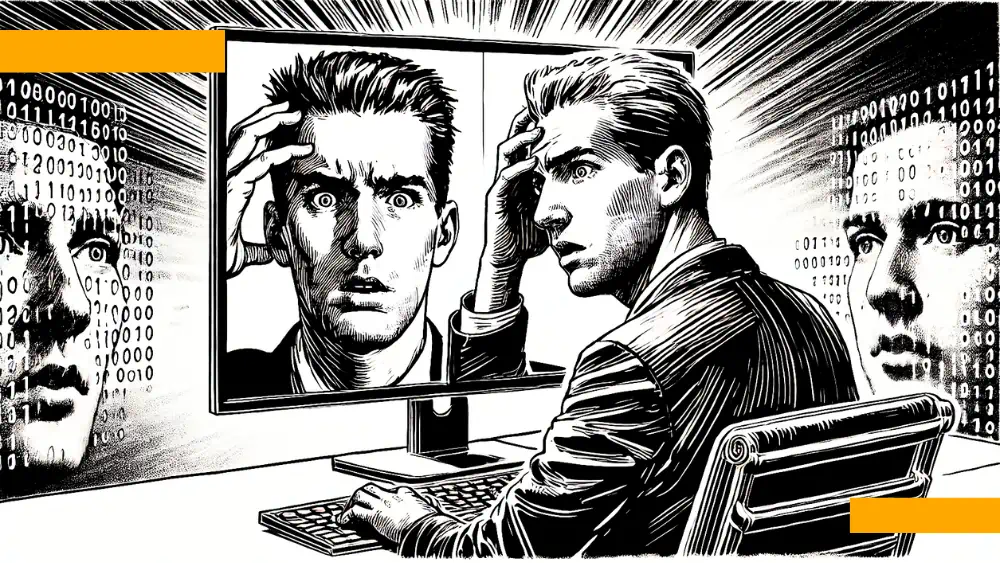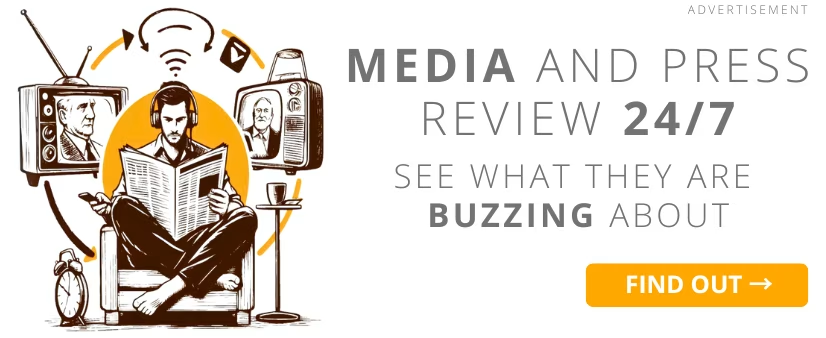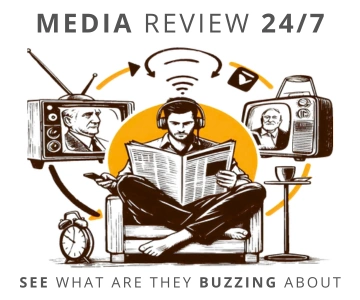 illustration: DALL-E
illustration: DALL-EResearchers Qiang Liu, Lin Wang, and Mengyu Luo from the University of Science and Technology in Shanghai set out to examine how deepfake technology affects the perception of information and users` trust in media. In their article When Seeing Is Not Believing: Self-efficacy and Cynicism in the Era of Intelligent Media, published in Humanities and Social Sciences Communications, they conducted two experiments involving 1,826 participants, analyzing how cynicism toward information changes depending on users` ability to recognize AI-generated content.
The experiments revealed that:
- Individuals with low self-assessment in recognizing AI content are more likely to question the authenticity of news that is personally significant to them.
- Low-risk content paradoxically raises more skepticism than content considered high-risk.
- Users who repeatedly struggle to assess the authenticity of deepfakes lose confidence in their abilities and abandon efforts to verify information.
This phenomenon leads to the so-called "apathetic reality," where audiences choose indifference over critical thinking regarding media consumption.
Why Are We Losing Trust in Media?
The growing cynicism toward AI-generated information is not just a technological issue but also a matter of how audiences process content. Research suggests that users engage more in content analysis when they feel the topic directly affects them.
Data shows that:
| Factor | Impact on AI Self-Assessment | Impact on Cynicism |
|---|---|---|
| High content relevance | Increased confidence | Reduced cynicism |
| Low content relevance | Decreased confidence | Increased cynicism |
| High-risk news | Greater inclination to verify | Lower level of cynicism |
| Low-risk news | Less interest in verification | Higher level of cynicism |
The study`s authors highlight the effect of cognitive fatigue. When users repeatedly encounter situations where they cannot distinguish deepfakes from real content, they stop making an effort to check. Ultimately, instead of verifying authenticity, they begin treating all information as potentially unreliable.
What Can We Do?
Experts emphasize that the solution lies not only in developing deepfake detection technologies but also in shaping new media literacy models.
- Social media platforms should implement more advanced mechanisms for labeling AI-generated content.
- Users should be trained not only in recognizing fake news but also in consciously processing information in an era of informational chaos.
- Journalists should make greater use of content verification tools and build communication strategies based on source transparency.
Liu, Wang, and Luo`s study found that even a small increase in users` self-confidence regarding AI leads to a significant reduction in cynicism and greater engagement in content analysis. This means that education and tools supporting content verification can help audiences regain control over what they consider true.
The Future of Trust in Information
Deepfake news is a challenge we will face for years to come. In the age of artificial intelligence, it is not just technology that determines what we believe but also our ability to recognize and critically analyze content. If we do not begin developing skills to navigate the world of synthetic information, we may find ourselves in a reality where we cannot even trust what we see with our own eyes.
* * *
Article by Liu, Q., Wang, L., Luo, M. (2025) When Seeing Is Not Believing: Self-efficacy and Cynicism in the Era of Intelligent Media, published in Nature Humanities and Social Sciences Communications, available at
https://www.nature.com/articles/s41599-025-04594-5
COMMERCIAL BREAK
New articles in section Media industry
Advertising market 2025. Poland, Europe and the World
Marcin Grządka
The global advertising market is growing by 8.8% in 2025 and will reach a value of 1.14 trillion dollars. The industry result in Europe records slightly lower dynamics, at the level of 5.8%. In this comparison, Poland performs clearly above the average. We will record an increase of 8.9% this year and a value of 18.56 billion PLN - estimates WPP Media in the annual report "This Year Next Year".
The print media market 2025. Three global trends
Krzysztof Fiedorek
The market value is 359.53 billion dollars, yet the erosion is visible to the naked eye. The decline for newspapers will amount to -2.3 percent. Despite this, print retains strength: it generates 76 percent of subscription revenues and enjoys 82 percent consumer trust. The future of the industry is defined by hybrid strategies and niche specialization.
Journalism in the age of AI. Why people prefer humans over machines
Krzysztof Fiedorek
Only 12% of people accept news created solely by AI, while 62% prefer those written by humans. At the same time, only 19% notice labels indicating the use of artificial intelligence, while younger audiences ask AI to explain the content to them. These are the findings of the Reuters Institute report on artificial intelligence in media.
See articles on a similar topic:
Artificial Intelligence is ALREADY Outperforming Humans in Creativity
Krzysztof Fiedorek
ChatGPT, an AI model based on the GPT-4 engine, achieved better results than the vast majority of students in the standard Torrance Test of Creative Thinking (TTCT), which evaluates creativity. The study was conducted by researchers from the University of Montana.
Journalism and Technology. How Indian Newspapers Fight to Survive
KFi
The COVID-19 pandemic accelerated the transformation of India's press industry. Traditional print media, forced to fight for survival, adopted modern technologies ranging from data analysis to artificial intelligence. How do journalists adapt to new roles, and how do media redefine their future in the digital age? Researchers from the Symbiosis Institute of Media & Communication have explored these questions.
Selfish Trap: A New Social Influence Technique
Krzysztof Fiedorek
Three psychologists from SWPS University have described a social influence method suggesting people are more willing to complete a task if it highlights a quality important to them, such as loyalty, intelligence, or rationality.
Social Media in 2025. Generational Differences Are Crystal Clear
KFi
More and more people are saying they’re cutting back on time spent on social media. And while this doesn’t mean a mass exodus, the trend is clear. According to latest GWI report, 31% of users said they had reduced their social media use. There’s also a subtle frustration.





























